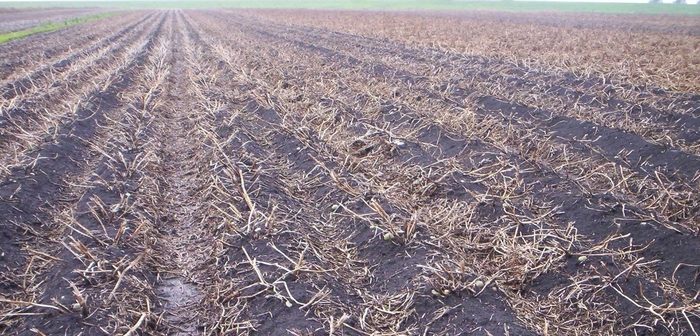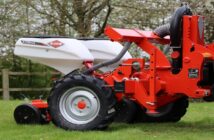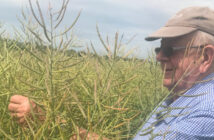While potato planting is only just getting underway, growers are being reminded to put crop haulm destruction plans in place now. With decisions made based on variety choice, end market and storage requirements, this will ensure only small tweaks to strategy are needed ahead of spraying and harvest.
FMC’s commercial technical manager Jeff Fieldsend points out that crop type and destination are key drivers of desiccation strategy. However, soil type, seed tuber physiological age, planting date, nitrogen management, irrigation and planned harvest date also need considering in order to achieve maximum crop growth potential and the best results at harvest.
“Multiple factors can influence the success of haulm destruction ahead of harvest, right from the possibility of physiologically ageing seed before planting by pre-chitting, and reducing overall nitrogen input in line with RB209, particularly on indeterminate varieties, by 30-50kg/ha,” says Jeff.
“Bringing desiccation calendar dates forward to ensure the crop is lifted in optimum conditions helps where possible. In terms of the actual process of haulm destruction itself, a flail and spray approach has consistently proven to provide faster and more effective than spray-only, particularly in densely-haulmed varieties such as Markies.”
Key criteria for effective results
Flailing before spraying-off ensures quick removal of haulm, and can speed up harvesting by as much as 25%, suggests Jeff.
“An upright crop usually flails better. Make sure flail blades are sharp, and topping height is set to flail stems to 15-25cm, removing as much leaf as possible, to ensure a good target for follow-up sprays. Ensure deflector plates are set to accurately guide chopped material away from the ridges into the troughs. Forward speed should be guided by canopy density.”
After allowing 24-48 hours for any remaining leaves to fall off and stems to dry, he then advises an application of 1.0 l/ha of Spotlight Plus (carfentrazone-ethyl).
“Whether applied to a flailed crop or direct to untouched foliage, crops should have started senescing before application. Where canopies are dense several applications may be required, sequencing Spotlight Plus with other approved products.”
Conditions during application are critical to success. Jeff suggests applying from mid-morning through until mid-afternoon when it is bright and sunny. As Spotlight Plus is contact-acting, good coverage is critical. He also advises that nozzles alternately facing forwards and backwards will aid canopy penetration.
“Water volumes of 300-600 l/ha, with the optimum around 450 l/ha, will ensure good penetration of the remaining canopy. However, sprayer type can play a part too, we’ve seen excellent results at 100 l/ha of water using Airtec sprayers although this is not currently supported by the label.
“Maintain seven-day intervals between applications where possible – a programme will typically take 21-28 days, and should include a foliar/tuber blight fungicide at each timing. While Spotlight Plus has a short seven-day harvest interval, harvest date should be judged by skin-set development.”
Carfentrazone is not as fast-acting as diquat, with die-off taking perhaps five to ten days longer, programmed use however will produce comparable results. “After application, monitor crops closely for any regrowth. If seen, a follow-up 0.6 l/ha application should be made after five to seven days.”
Application of Spotlight Plus can be made to all ware or seed varieties and to either wet or dry soils with no risk of causing vascular browning, he says, with best results achieved when applied to a senescing crop.




